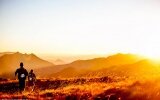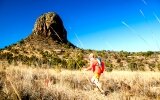- Magazine
- #readityourway
- Weekly Stories
- #shareyourstory
-
Adventure
- Abroad Travelling
- Africa Travelling
- Events
- Expos & Shows
- Festivals
- Fishing
- Free Diving
- Gliding
- Horse Riding
- Inspiring People
- Islands Travelling
- Kite/Windsurfing
- Motorbiking
- Motorised Water Sports
- Mountaineering
- Mountain Biking
- Off-road 4x4
- Off-road Motorbiking
- Paddling
- Performance Driving
- Photography
- Rock Climbing
- Rollerblading
- Sailing
- Scuba Diving
- Skateboarding
- Skydiving
- Snowboarding & Skiing
- Surfing
- Swimming
- Trail Running
- Wakeboarding
- Waveski Surfing
-
Sport
- Adventure Racing
- Fishing
- Free Diving
- Gliding
- Health & Fitness
- Horse Riding
- Inspiring People
- Kite/Windsurfing
- MMA
- Motorbiking
- Mountain Biking
- Multi-sport
- Off-road 4x4
- Off-road Motorbiking
- Paddling
- Performance Driving
- Photography
- Road Cycling
- Road Running
- Rock Climbing
- Rollerblading
- Sailing
- Scuba Diving
- Skateboarding
- Skydiving
- Snowboarding & Skiing
- Surfing
- Swimming
- Rugby
- Trail Running
- Triathlon
- Wakeboarding
- Waveski Surfing
- Lifestyle
- Calendar
An Idiom Aboard
Words: Dave Chamberlain | Photos: Stirling Keen
Topic:
Trail Running
Finding oneself caught between a rock and a hard place is never an overtly enjoyable experience, especially when the aforementioned rock is the southern-most tip of the South American continent, Tierra del Fuego, a piece of land that quaintly translates to 'Land of Fire', and the 'hard place' is the steely gaze of my mother.
I’m not a nervous boat traveller by nature. As a dive instructor, I’ve spent many hours bobbing about on little bits of motorised flotation. However, the thought of crossing water that is prone to vicious storms, driven up from Antarctica, certainly made me feel like I was trapped between the Devil and the deep blue sea. And before anybody accuses me of misrepresenting my mum, she really isn’t the Devil. In fact, she is quite a cool old duck. My sense of concern was ultimately unjustified as, barring just one day, we experienced what was probably the most incredible 10 days’ worth of user-friendly weather in the history of Antarctica, which was fantastic because the only reason I, and my family, was on that boat was to run the 2012 Antarctic Marathon in celebration of my mum's birthday. Held on King George Island, 120 km from mainland Antarctica, the reasons for choosing this race were: a) it didn’t require any pre-qualifications; b) it had penguins and other pelagics that had my dad drooling at the mouth; c) it's open to everyone, irrespective of one's ability; d) it's a race that attracts its fare share of South Africans, with whom we hoped to skinner in Afrikaans to in front of any Ozzies; and e) it was something the whole family could do.
Regardless of the personal reasons, a trip to Antarctica only comes around once in a blue moon. We flew from Johannesburg to Ushuaia, via Buenos Aires, and then boarded the Akademik Ioffe. While normally serving as a Russian science research vessel, no expenses were spared, particularly in the catering department, but in the confines of the quarters, a spirit of ‘scratch my back and I’ll scratch yours’ certainly made life easier. Unless of course that back belongs to my dad, whose ability to compete with the silverbacks of the Ugandan highlands would have been of interest to both Leakey and Goodall. In saying that, one can’t help but feel sorry for the birthday girl. Apart from his shiny coat, my dad also belongs to that wonderful group known as twitchers, so it was heaven on deck for him as he watched the array of pelagic bird species, including petrels and albatross, wheeling effortlessly on the merest hint of a breath of air, above the boat.
And so we chugged along over the next two-and-a-half days towards our destination of King George Island, which lies just to the west of the Antarctic Peninsula, Weddell Sea and the famous Elephant Island (the departure site of Ernest Shackleton's epic open-boat rescue attempt in 1916). Assembled onboard - our boat, not Shackleton's - were a 100 souls of every shape, age, ethnicity and size, including a Japanese runner who was attempting his 300th marathon.
We dropped anchor the evening prior to race day and spent the time preparing for this race-with-a-difference. Organised by One Ocean Expeditions and Marathon Tours and Travel, the race itself was spectacular. A series of figure-of-eight laps between the various permanent bases laid out the course that needed to be completed to cover the marathon distance. As luck would have it, race day was the only day of the entire trip that wasn’t sunny skies and the 100 enthusiastic runners were greeted by 70 kph+ gusts, horizontal snow, rain and temperatures that dropped at times to around -10°C. While it is a relatively flat course, the ubiquitous semi-frozen puddles of mud, rock and general slush made the footing treacherous. Each runner was also responsible for their own energy needs, but in the conditions, energy bars and drinks had to be sandwiched between thighs and even stuffed into running shoes, in an attempt to thaw them out. However, throw in some snow-capped peaks, bobbing icebergs and aquamarine-coloured lakes, and one couldn’t have asked for a more dramatic setting.
Having just completed a 5,200 km jog down the length of Argentina, I felt well positioned to both enjoy the run and still put in a decent time. However, with the thrill of the trans-Argentine run still coursing through my veins, combining with the mind-blowing beauty of the setting, I was on such a buzz that I was not only unaware of the cold and the ups and downs, I totally forgot about racing.
There were a few worryingly athletic-looking types hanging around, the stand out being a 5'11, blonde Australian lifeguard, the complete antithesis to my rather dumpy 5'6. On a rather important side note, Jane Fonda's fitness tapes will hold a certain ‘charm’ amongst males from a certain epoch, however, 'the Ozzie' is the only guy I’ve met who honestly watched them for their health benefits. Needless to say, my stumpy duiker legs managed fourth to Terence’s gemsbok first place, and to add salt to the wound, he’s also got a great personality. Unfortunately, due to the conditions, there wasn’t much opportunity to sit around and cheer the whole group in, and so it was with admittedly only a smidgeon of guilt that I sat in the steamy jacuzzi onboard the boat while waiting for two of my sisters to complete the marathon, and my parents and third sister to finish the half-marathon.
With the race formalities completed, the ship embarked on a five-day tour of the Bransfield Strait. This may sound slightly silly, but until you visit the Antarctic, you actually have no real concept of the immense amount of snow and ice. To fully grasp that some of the ice fields are many kilometres deep requires you to go and experience this amazing part of the world for yourself. Herein lies the crux of the problem though. Every time an alien species enters a region, it will leave a lasting impact. Tourism figures to the continent are approaching 40,000 per annum, with the majority sailing down on boats like ours, although there are also air charter companies that fly people in and out. To really appreciate the beauty of a place, some tour operators and environmentalists insist that people need to physically be there to experience its true value. In other words, if you don’t know about something, how can you appreciate and save it? It’s hard to say …
During our five days of cruising, we kayaked amongst humpback whales and leopard seals. We explored the shoreline of the continent, with its seal and penguin colonies, and we had the chance to climb up some of the ridges and look out over the ocean in some of the clearest and cleanest air on the planet. We sailed past icebergs bigger than the Johannesburg CBD and saw pods of juvenile orca learning hunting techniques under the supervision of circling adults. The sense of peace and naive tranquillity as life just calmly goes on was very palpable in Antarctica. The urge to jump ship and spend a bit of time at a research station was hard to resist.
As we sailed back to Ushuaia to disembark for the final time, an air of melancholy filled the boat. It was partly a reaction to saying goodbye to some pretty funky people, as would be expected, but it was also tinged with sadness that this incredibly brittle, innocent and mind-blowing part of the world is slowly disappearing, whether through natural environmental change or through human exploration and exploitation.
Antarctica is a place that leaves a very strong impression. Directly, seeing the huge range of personalities amongst the resident penguins motivated my 2,700 km conservation run for the endangered African penguin and BirdLife South Africa late last year. Indirectly, having finally visited a place that has always intrigued me, and a place where survival is so finely balanced, keeps me motivated to visit other parts of the world as part of a grand conservation awareness run, which will hopefully culminate in a circumnavigation of the globe. The penguin run has been ticked off. Next stop will be Canada and polar bear conservation.
Slightly bemused people keep asking how I continue to run such distances while living in a tent in the middle of nowhere. Having travelled as I have, and engaged with the world as I have, I can’t help asking people why THEY haven’t run such distances yet. I understand how incredibly privileged I was to be able to visit Antarctica and that it isn’t a destination that is achievable to the vast majority of people. But one thing that the penguin run brought home was just how fantastically beautiful the world is right here in our own backyard.
Running is easy. Running is simple. Best of all, running is something that you can do anywhere. You don’t have to wait until you can afford to go to Antarctica to have your eyes opened. The next time you are on holiday or simply away from home, take some time off, lace up some shoes and go find out what wonderful places your feet can take you to. All it takes is a small shift in outlook and a small adjustment to your lifestyle, very much like a diet in fact. And like all diets, don’t wait to start it tomorrow, DO IT NOW.
dinFO:
To find out more about the Antarctic Marathon and Half Marathon and exploring the most pristine part of our planet, visit www.marathontours.com. Due to the incredible popularity of this event, it has already sold out for 2014 and 2015, so you will need to set your sights on 2016 and book now!
|
|
|
|
|
|
|
|
|
|
|
|
|
|
|
|
|
|
Issue:
Issue 26 Jun '13
Related content
|
|
|
|
|
|
|
|
|
|






